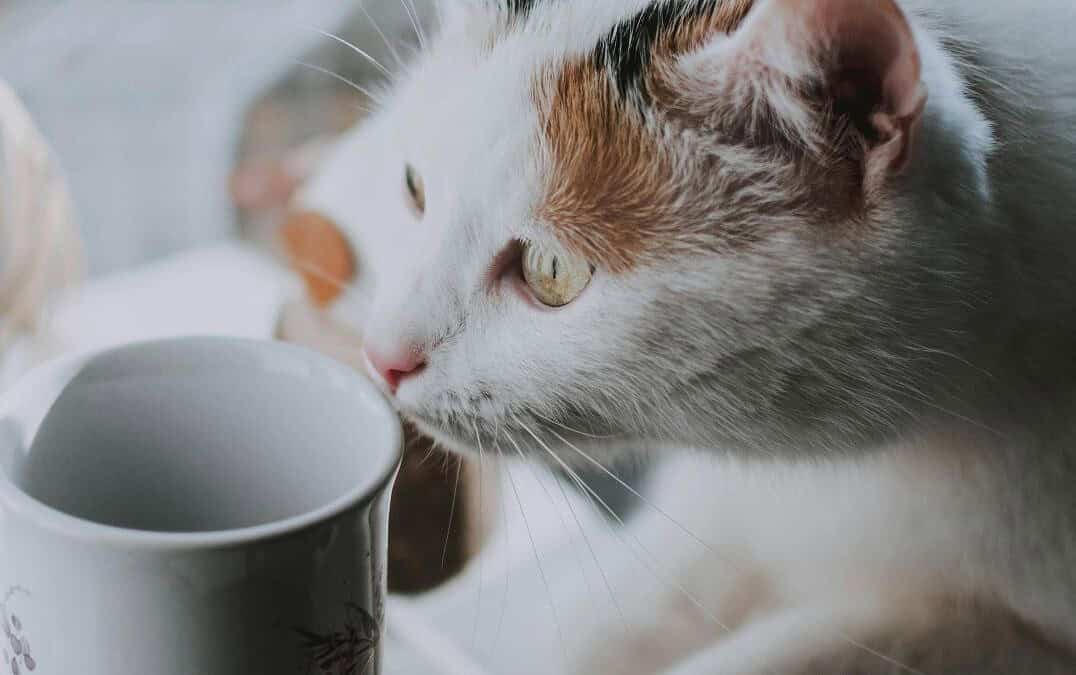Cat owners often find themselves fascinated by the quirky behaviors their feline friends exhibit. From kneading with their paws to staring intensely at seemingly nothing, these actions can be both amusing and puzzling.
Understanding cat behavior and feline quirks can help strengthen the bond between you and your pet. By deciphering the meanings behind these weird cat habits, you can better meet your cat’s needs and improve their overall well-being.
Observing cat body language is key to understanding their behavior. By paying attention to their postures, facial expressions, and other non-verbal cues, you can gain insight into their emotional state and needs.
Key Takeaways
- Understanding cat behavior can strengthen your bond with your pet.
- Feline quirks are often a sign of your cat’s emotional state.
- Cat body language is crucial for understanding their needs.
- Weird cat habits can be a sign of underlying issues.
- Observing your cat’s behavior can improve their well-being.
Decoding Your Cat’s Mysterious Body Language
Cats use a variety of postures and expressions to convey their emotions, making understanding their behavior crucial for a harmonious relationship.
Feline communication is a complex interplay of body language, vocalizations, and even scent markings. By deciphering these signals, cat owners can better understand their pet’s needs and emotions.
The Science Behind Feline Communication
Research into cat behavior has shown that their communication methods are deeply rooted in their wild ancestors’ survival strategies. For instance, a cat’s tail can convey a range of emotions from happiness to fear.
| Body Part | Signal | Meaning |
|---|---|---|
| Tail | High and still | Confidence or happiness |
| Ears | Forward and perked | Interest or friendliness |
| Whiskers | Forward and tense | Aggression or fear |
Why Understanding Cat Behavior Matters
Understanding your cat’s behavior can lead to a stronger bond between you and your pet. By recognizing signs of stress or happiness, you can tailor your interactions to meet their needs, enhancing their well-being and your relationship.
Moreover, understanding cat behavior can also help in identifying potential health issues early on, as changes in behavior can often be indicative of underlying medical problems.
The Midnight “Zoomies” Phenomenon
If you’ve ever been awoken by the sound of your cat sprinting around your home, you’re not alone in wondering what triggers these midnight bursts of energy. This phenomenon, affectionately known as the “zoomies,” can be both entertaining and baffling. Cats, by nature, are predators with a strong instinct to hunt and play, and these nocturnal escapades are a manifestation of their innate behavior.
What Triggers Sudden Bursts of Energy
Several factors can contribute to your cat’s sudden bursts of energy at night. One primary reason is the natural instinct to hunt, which is more pronounced in the evening or at night, aligning with the behavior of their wild ancestors. Pent-up energy from a lack of activity during the day can also be a significant factor. Cats need stimulation, and if they’re not getting enough playtime or mental stimulation, they might release this pent-up energy at night.
How to Channel Your Cat’s Nocturnal Activity
To manage your cat’s nocturnal activity, it’s essential to ensure they’re getting enough stimulation during the day. Engaging your cat in play sessions during the early evening can help tire them out before bedtime. Providing a variety of toys and rotating them regularly can keep your cat engaged and interested. Additionally, creating a calm sleep environment can help signal to your cat that it’s time to rest.
By understanding and addressing the underlying causes of the “zoomies,” you can help redirect your cat’s energy into more productive and less disruptive behaviors, ensuring a more peaceful night’s sleep for both you and your pet.
Kneading or “Making Biscuits” on Soft Surfaces
When cats knead on soft surfaces, they’re exhibiting a behavior rooted in their early developmental stages. This action, often referred to as “making biscuits,” involves the cat pressing its paws into a surface, typically in a rhythmic manner.
The Origins of Kneading Behavior
Kneading is a behavior that cats develop from kittenhood. As newborn kittens, they used to knead their mother’s belly to stimulate milk production and comfort. This early behavior is crucial for their nourishment and bonding with their mother. As they grow, this kneading behavior can persist, becoming a comforting and self-soothing action.
What Your Cat Is Telling You When They Knead
When your cat kneads on a soft surface, such as a blanket or your lap, it can signify contentment and relaxation. Cats often knead when they feel comfortable and secure in their environment. It’s also a way for them to mark their territory, as they have scent glands in their paws. By kneading, they’re depositing their scent on the surface, claiming it as their own.
Understanding your cat’s kneading behavior can deepen your bond with them. It’s a sign of trust and comfort, indicating that your cat feels at ease in your presence. So, the next time your cat starts kneading, recognize it as a compliment to your companionship and a display of their natural feline behavior.
Bringing You “Gifts” of Dead Prey
Cats often surprise their owners with “gifts” of dead animals, a behavior that, while puzzling, is deeply rooted in their natural instincts. This action is a manifestation of their hunting prowess and prey drive, characteristics that have been honed over centuries.
The Hunting Instinct Behind Morbid Presents
The behavior of cats bringing home dead prey is an expression of their innate hunting instinct. In the wild, cats often bring back prey to their nests or dens to feed their kin or to store for later consumption. Domesticated cats, while not needing to hunt for survival, still exhibit this instinctual behavior.
How to Respond to Your Cat’s Offerings
When your cat brings you a “gift” of dead prey, it’s essential to respond in a way that acknowledges their behavior without encouraging it. One approach is to calmly remove the prey without making a big fuss, thus not reinforcing the behavior. Ensuring your cat is well-fed and stimulated can also reduce their inclination to hunt.
| Reason for Bringing Prey | Owner’s Reaction | Outcome |
|---|---|---|
| Hunting Instinct | Praise or Scold | May Reinforce Behavior |
| Instinctual Behavior | Calmly Remove Prey | Discourages Bringing Prey |
| Need for Stimulation | Provide Alternative Stimulation | Reduces Hunting Behavior |
Understanding why cats bring home dead animals can help owners manage this behavior more effectively. By recognizing the hunting instinct behind these actions and responding appropriately, owners can discourage their cats from bringing home unwanted “gifts.”
The Obsession With Sitting in Boxes and Tight Spaces
One of the most intriguing aspects of cat behavior is their tendency to seek out and occupy confined spaces. Whether it’s a cardboard box, a small enclosure, or even a tight spot between furniture, cats seem to have an innate preference for being in enclosed or confined areas.
Why Confined Spaces Make Cats Feel Secure
Cats often feel more secure and comfortable in confined spaces due to their natural instinct to hide and feel protected. In the wild, cats use hiding spots to stalk prey or avoid predators. This instinctual behavior is preserved in domestic cats, who may view boxes or tight spaces as safe havens.
Creating Appealing Hideaways for Your Cat
To cater to your cat’s love for confined spaces, you can create appealing hideaways around your home. Simple solutions include providing cardboard boxes of various sizes or purchasing cat tents and enclosures. Placing a blanket or soft cushion inside these hideaways can make them even more inviting.
| Hideaway Type | Description | Tips for Enhancement |
|---|---|---|
| Cardboard Box | A simple, readily available option that cats often find appealing. | Cut holes for easy entry and exit, and place a soft blanket inside. |
| Cat Tent | A collapsible, fabric enclosure that provides a cozy hideaway. | Place it in a quiet area, and consider adding a familiar scent like a blanket they’ve used before. |
| Tunnel System | A network of connected tunnels that allow cats to explore and hide. | Ensure the tunnels are sturdy and comfortable, and encourage exploration by placing treats inside. |
By understanding and catering to your cat’s preference for confined spaces, you can enhance their sense of security and comfort in your home.
Chattering at Birds Through Windows
When cats spot birds or other small animals outside, they often react with a unique form of expression: chattering. This behavior is characterized by rapid jaw movements, sometimes accompanied by a high-pitched sound. It’s a common observation among cat owners who have windows that allow their pets to gaze outside.
The Predatory Origins of Jaw Chattering
Jaw chattering in cats is rooted in their predatory instincts. In the wild, cats use similar movements to kill their prey, and this behavior is a manifestation of their natural hunting drive. Even though domesticated cats may not need to hunt for food, they still exhibit this instinctual behavior when they see potential prey.
What Different Chattering Intensities Indicate
The intensity of a cat’s chattering can vary, and it often correlates with the cat’s level of excitement or frustration. A more vigorous chatter may indicate a stronger predatory drive, while a softer chatter could suggest a more subdued interest. Understanding these nuances can provide insights into a cat’s emotional state.
| Chattering Intensity | Possible Interpretation |
|---|---|
| HighIntensity | Strong predatory drive, high excitement |
| LowIntensity | Mild interest, less excitement |
| VariableIntensity | Fluctuating levels of engagement or frustration |
10 Weird Things Your Cat Does—And What They Really Mean in Evolutionary Context
By examining the evolutionary context of cat behaviors, we can gain insight into their quirky nature. Domestic cats, despite their comfortable home environments, often exhibit behaviors that were once crucial for their wild ancestors’ survival.
How Wild Cat Behaviors Persist in Domestic Cats
The behaviors we see in domestic cats today are a result of inherited traits from their wild predecessors. For instance, the instinct to hunt and the energy bursts known as “zoomies” are remnants of survival strategies used by wild cats. These behaviors have been passed down through generations, even though the need for such actions has diminished in a domestic setting.
Feline hunting instincts remain strong, often manifesting in play or the “gift” of dead prey. This behavior is a natural extension of their wild ancestors’ need to hunt for food. Similarly, kneading is a leftover from kittenhood when they used to stimulate milk production from their mothers.
The Surprising Intelligence Behind Quirky Habits
Behind the seemingly bizarre habits of cats lies a level of intelligence and adaptability. Cats are capable of problem-solving and learning, often using their quirky behaviors to communicate or achieve a goal. For example, chattering at birds is not just a sign of frustration; it’s an expression of their predatory instincts and a form of practice for potential hunting.
The intelligence behind these behaviors is also evident in how cats adapt their environment to their needs, such as claiming boxes or tight spaces as their own secure spots. This adaptability showcases their ability to think and act based on their instincts and learned behaviors.
In conclusion, the quirky behaviors of domestic cats are not just random acts; they are rooted in the cats’ evolutionary history and demonstrate a level of intelligence and adaptability. Understanding these behaviors in their evolutionary context can deepen our appreciation for our feline companions.
The Slow Blink or “Cat Kiss” Communication
The “cat kiss” or slow blink is a subtle yet significant gesture that signifies feline trust. When your cat looks at you and blinks slowly, it’s a sign that they feel comfortable and secure in your presence.
This form of non-verbal communication is unique to the bond between cats and their owners. Understanding the slow blink can deepen your relationship with your cat and provide insights into their emotional state.
How Cats Express Trust Through Eye Contact
Cats use eye contact to convey a range of emotions, from aggression to affection. The slow blink is a way for your cat to express trust, as it indicates they are not threatened by your presence.
In the wild, cats rarely maintain eye contact with each other unless it’s a challenge or threat. However, domesticated cats have learned to use eye contact and blinking to communicate with their human caregivers.
| Cat Behavior | Interpretation |
|---|---|
| Slow Blinking | Sign of trust and affection |
| Direct Stare | Can be a challenge or threat |
| Avoiding Eye Contact | May indicate fear or submission |
Using Blinks to Strengthen Your Bond
You can strengthen your bond with your cat by responding to their slow blinks. When your cat blinks at you, try blinking back slowly. This reciprocal gesture can create a sense of mutual understanding and affection.
By acknowledging and responding to your cat’s slow blinks, you can enhance your communication and build a deeper connection with your pet.
The Deliberate Knocking of Objects Off Surfaces
If you’ve ever watched in amazement as your cat batted at an object, sending it crashing to the floor, you’re not alone. This behavior, while often frustrating for owners, is a common manifestation of feline curiosity and playfulness.
Cats engage in this behavior for several reasons. Primarily, it’s a form of feline play that allows them to exercise their natural hunting instincts. By knocking objects off surfaces, cats are able to practice their reflexes and coordination, much like they would in the wild when hunting prey.
Why Your Cat Enjoys Pushing Things Over
One reason cats enjoy pushing things over is that it provides them with a sense of control and agency over their environment. This action can be seen as a way for cats to interact with their surroundings in a meaningful way, even if the objects they are knocking over are inanimate.
Additionally, the sound and reaction caused by knocking objects over can be a source of entertainment for cats. The crashing sound and the subsequent reaction from their owners can stimulate their auditory senses and provoke a response, making it a form of interactive play.
Strategies to Protect Your Belongings
To minimize damage, owners can take several steps to protect their belongings. Securing fragile or valuable items off surfaces is a practical first step. Providing cats with alternative objects to bat around, such as toys or interactive playthings, can redirect their energy away from undesirable targets.
By understanding the motivations behind this behavior and implementing strategies to safeguard belongings, cat owners can better navigate this challenging aspect of feline behavior.
The Bizarre Bathroom Companion Behavior
One of the most puzzling behaviors exhibited by cats is their tendency to follow their owners into the bathroom. This behavior is not only intriguing but also raises questions about the motivations behind such actions.
Why Cats Insist on Following You to the Bathroom
Cats are known for their independence, but when they follow you to the bathroom, it’s often a display of feline companionship. They might be seeking closeness or trying to stay connected with their owners. This behavior can be attributed to their natural instinct to stay near their pack members.
The Vulnerability and Protection Instinct
Another theory is that cats follow their owners to the bathroom due to a protection instinct. Cats may perceive their owners as vulnerable when they’re in a private space, prompting them to keep watch. This protective behavior is rooted in their wild ancestors’ instincts to safeguard their group members.
Understanding cat bathroom behavior can provide insights into the complex dynamics of human-cat relationships. By recognizing the motivations behind this behavior, owners can better appreciate their cat’s unique personality and needs.
Sudden Unexplained Sprinting After Using the Litter Box
Post-litter box sprinting, affectionately termed “poop zoomies,” is a quirky behavior that has left many cat owners puzzled. This sudden burst of energy can be both amusing and concerning, depending on the context and frequency.
The “Poop Zoomies” Explained
Several theories attempt to explain why cats exhibit this behavior. One possibility is that it’s a residual instinct from their wild ancestors, who needed to quickly move away from their waste to avoid predators. Another theory suggests that the act of using the litter box might be a relief or a form of satisfaction, triggering a joyful outburst.
Some key reasons behind “poop zoomies” include:
- Relief and Joy: Cats might feel a sense of relief after using the litter box, leading to a burst of energy.
- Instinctual Behavior: Wild cats had to move away from their waste to avoid detection by predators.
- Playfulness: Cats, especially younger ones, might view the post-litter box period as a playful moment.
When Post-Litter Box Behavior Indicates Health Issues
While “poop zoomies” can be a normal behavior, it’s essential to monitor your cat’s litter box activities and overall health. Sudden changes or accompanying symptoms like diarrhea, constipation, or pain while using the litter box could indicate underlying health issues.
Signs that might indicate health concerns include:
- Frequent or persistent “zoomies” that are out of character.
- Changes in litter box behavior, such as avoiding the litter box or accidents outside of it.
- Visible signs of distress or pain during or after litter box use.
If you notice any of these signs, it’s advisable to consult with a veterinarian to rule out any potential health issues.
Conclusion: Embracing Your Cat’s Quirky Nature
Understanding your cat’s behavior is key to strengthening your bond and creating a harmonious home environment. By recognizing the reasons behind their quirky actions, you can better appreciate their unique personality and needs.
Cat owners often find themselves fascinated by their pet’s strange habits, from kneading and chattering to bringing home “gifts” of dead prey. These behaviors, though sometimes puzzling, are a natural part of being a cat. Embracing your cat’s feline nature means accepting and appreciating these quirks, rather than trying to change them.
By doing so, you can foster a deeper connection with your cat and create a more nurturing environment. So, the next time your cat exhibits a peculiar behavior, remember that it’s just a part of their charm. Appreciate their individuality and enjoy the unique companionship they offer.









